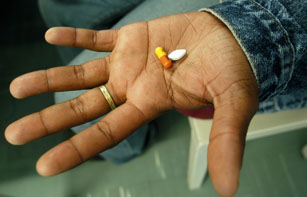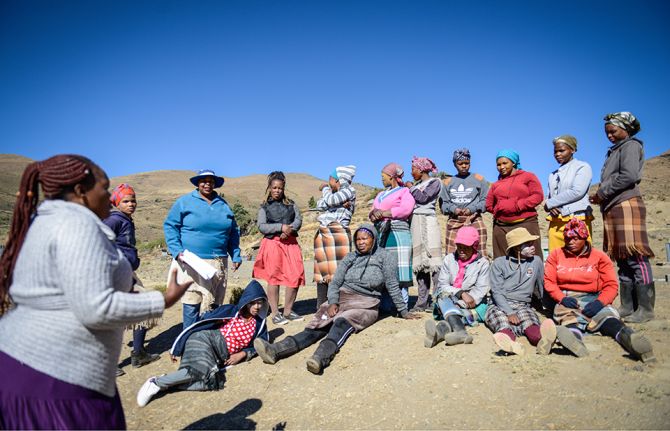
Feature Story
Market approaches for innovation and access to medicines: Challenges and opportunities
10 June 2011
10 June 2011 10 June 2011
Credit: UNAIDS
What lessons can be learned from market-based approaches to providing medicines and healthcare in low- and middle-income settings? What are the challenges and future opportunities? These were the key questions raised at an event organised by UNITAID, UNAIDS and the Medicines Patent Pool at the High Level Meeting on AIDS in New York on 9 June.
The event, which took the form of a lively debate, was chaired by Philippe Douste-Blazy, Chair of UNITAID’s Executive Board. Andrew Jack of the Financial Times served as moderator. Speakers included UNAIDS Deputy Executive Director, Programme, Dr Paul De Lay, Dr Precious Matsosa, South Africa’s Director General for Health, Brenda Waning, Coordinator of Market Dynamics at UNITAID, Ellen t’Hoen, Executive Director of the Medicines Patent Pool, and Clifford Samuel of Gilead Sciences.
A changing landscape
The participants discussed how globalization and economic development are changing the international health landscape and examined current challenges to innovation and access. They also looked at interventions needed to ensure that emerging new medicines and technologies can be absorbed by health systems in developing countries.
It was noted that the recent adoption of market-based approaches to public health provision by several donors and international organisations, such as UNITAID—which has committed over US$1.5 billion since 2006—has led to sustainable markets for manufacturers, encouraging price reductions and the development of new medicines, such as AIDS drugs.
We need a research and development agenda that meets the specific needs of low- and middle-income countries. This includes ARV that can be used safely with TB treatment, for children, and during pregnancy
Dr Paul De Lay, UNAIDS Deputy Executive Director, Programme
Paradigm shift
However, this paradigm is beginning to shift. For example, by 2008 India had provided 87% of AIDS medicines used in developing countries. Today, Indian manufacturers are turning their attention towards research and development and service in middle-and high-income markets. This leaves potential space for local producers in low-income countries to establish medicine production for their own markets if such access can be promoted.
In his introductory remarks on future challenges and gaps in innovation and access, Dr De Lay stressed that one key innovation challenge was to provide simplified drug regimens and diagnostics to ensure easier supply and greater adherence to treatment in developing countries.
“We need a research and development agenda that meets the specific needs of low- and middle-income countries. This includes ARV that can be used safely with TB treatment, for children, and during pregnancy,” said Dr De Lay.
“We expect that drug optimization will proceed in several phases which will include optimizing existing treatment including dose reductions and frequency, where possible and implementing emerging new technologies including point of care viral load and CD4 testing; next-generation of low cost, highly effective first and second line treatments; and first generation of long-lasting injectable ART.”
Commenting on exactly why new market approaches were needed to meet today’s challenges, Mr Douste-Blazy explained, “UNITAID works to impact on markets and increase access to innovative products at affordable prices. This is the beginning of an era that sees the poorest people start to gain access to the newest, most expensive products at a price their governments can afford.”
Talking specifically about how to promote innovation in the field of HIV that seeks to address developing country needs, Ms t’Hoen contended that the recently created Medicines Patent Pool “could spur innovation in needed formulations for children and combination medicines as well as bring down prices by promoting generic production of newer medicines.”
Dominant national purchasers emerging
The participants also discussed how industrial and economic developments are helping to change the power-base within the global health landscape from large donors to a few dominant national purchasers. For example, the recent tender by the South African government represents approximately 25% of the developing country market for AIDS medicines and the government also self-funds 75% of the country’s ARV purchases in 2010-2011.
Dr Matsoso expanded on the role national governments play in shaping regional and global markets and underlined the importance of fast tracking the registration of new medicines in developing countries. “We need to harmonise medicines regulation at the regional level to ensure faster uptake of new and innovative products in our countries,” she said.
All those taking part in the event committed to redoubling efforts to protect lives by helping to ensure that attractive markets are created for producers while promoting public health goals of continued innovation and universal access to HIV treatment.
As Dr De Lay summed up: “We have all contributed to the accomplishment of vastly increasing the numbers of people living with HIV who are on ART. For the foreseeable future ART demand will be increasing and we expect to see pressures on ART supply, and continuing innovation in research and development of new ART formulations, as well as for laboratory diagnostic and monitoring tests, is required, and this may require new incentive mechanisms.”



